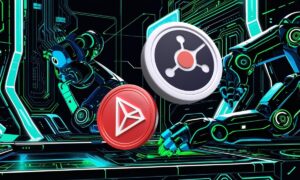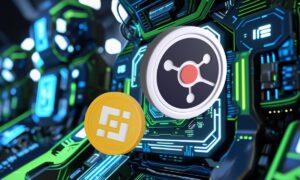By 2028, the Ed-tech business is estimated to be worth more than $377 billion. The introduction of new technology and the changing demands of students, in my opinion, are the reasons for this predicted rise.
Because of the pandemic, the educational environment has transformed, and the EdTech industry is expected to grow by approximately 21% year over year in 2021. Now that we’ve entered a new year full of unexpected twists and turns, I’d like to offer the three trends I feel the EdTech sector should be watching and preparing for in 2022.
1) Artificial Intelligence in Educational Tech
Artificial intelligence and machine learning are showing up in everything from classroom management tools to cybersecurity in 2022, making them one of the top ed-tech trends.
Artificial intelligence (AI) and machine learning (ML) technologies are already being used in schools to make visible and behind-the-scenes data-driven judgments. Students and instructors may connect with AI through voice assistants in online teaching platforms, while AI-powered content screening and cybersecurity technologies operate intelligently in the background. The applications of AI and machine learning will only expand in 2022.
Artificial intelligence has risen at an exponential rate in the last five years, and it will continue to expand at an unbelievable rate in the future. Schools have already started process documentation in hopes of automating many tasks that teachers and administrators do. This helps them spend less time on manual tasks and more time on educating students.
In the field of education, smart content is a hot issue. It is nothing more than the digitization of textbooks and study notes and helps to sell notes online, the creation of video lessons and lectures, the development of interactive training sessions, and so on. In education, artificial intelligence aids in the creation of customizable interfaces that allow students to learn more readily and comprehend concepts better. Smart content may be developed for any subject and any course, whether it is at the primary or postgraduate level.
2) Game-based learning
Following the move to online teaching, cloud technology increased in popularity. Students were able to collaborate and finish assignments from anywhere using Software as a Service technologies. Despite the fact that schools reopened for in-person learning, cloud-based software remained popular in education due to the flexibility to access work from any device and the simplicity with which installed apps could be scaled to match students’ demands.
Infrastructure as a Service is also gaining traction, with some employing it for disaster recovery and others opting for this forward-thinking technology to prepare for the future of education. IaaS can also be further utilized with API management; this would allow schools and school districts to deploy APIs to automate a lot of the operations for game-based learning.
It’s more than just offering pupils instructional games like The Oregon Trail when it comes to game-based learning. It’s about altering students’ attitudes toward learning and learning’s attitudes toward students. The idea is for pupils to appreciate the learning experience as a whole.
When students start learning through games, they have a greater sense of ownership over the course content, which promotes retention students attention. At the same time, the combination of multiple techniques and goal-based learning addresses all of the varied learning styles. A game can be tailored to a student’s primary, secondary, or tertiary learning style. Games may also mix many subjects within a single game, making them a versatile learning tool.
Learning games can provide a safe atmosphere for pupils to fail. In a public environment such as a classroom, it can be difficult for students, particularly adolescents, to fail. Games provide children and students the opportunity to try new things. They may simply try again and learn from their mistakes if they fail in the game’s setting. Students learn via exploration and trial and error rather than by rote memory.
3) Blockchain
In the field of education technology, the use of blockchain is becoming increasingly popular. It offers a decentralized, safe, and open educational ecosystem. Edutech platforms may use blockchain to link students, professionals, and professors to appropriate courses and resources.
Courses and lessons may be planned, provided automatically when specific circumstances are met, and progress tracked in real time with smart contract capabilities. Institutions may use blockchain to safeguard a variety of papers and information, including admissions, attendance, payment records, and grades and marks.
Students may keep their degrees and certificates safe, access them, and have them confirmed anytime they need them. With the introduction of blockchain, the cost of schooling will be reduced because many manual chores will be eliminated.
Some people are wary about blockchain because of the hype and possible hazards, and they are hesitant to incorporate it into their systems. Others, on the other hand, are content with the present technology that supports their processes and systems and do not want to switch to a new one.
However, there is a sizable segment of the K-12 education business that has already had success with the usage of blockchain in education.
These individuals, in turn, are attempting to educate others and raise awareness of the technology’s benefits. These initiatives may ultimately allow them to realise the full potential of blockchain in EdTech.
The application of blockchain in education has the potential to completely transform EdTech. In the long term, this has the potential to unlock limitless possibilities for the whole educational business.
Summing up
Edtech is evolving, but it will continue to face challenges. Nobody knows which tendency will result in the most significant changes in schooling. Some of these trends will arise as a consequence of technical improvements, while others may emerge as a result of progressive consumer performance reactions. Collaboration on a worldwide scale might develop a lot of them. Keeping up with the rapid speed of change necessitates following these five trends.
Make sure your learning platform is flexible, and that your courses fit the needs of new students. You may also consider delegating some of your day-to-day responsibilities to AI. Disruptive techniques, such as social learning, and new technology, such as blockchain, should be avoided. You will be able to keep ahead of your opponents, or at the very least retain your position, in this manner.



































